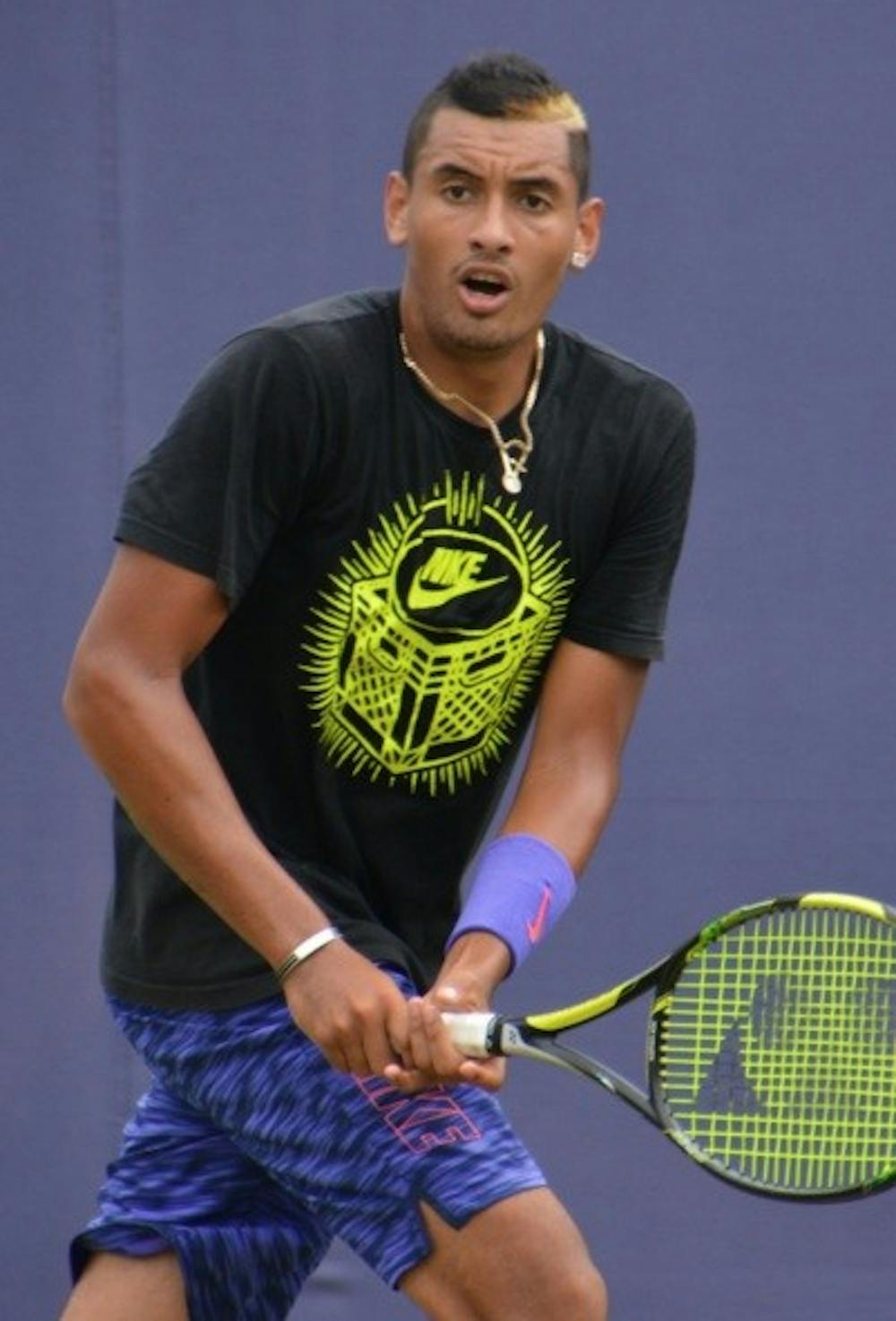By SAMMY BHATIA Sportpinion
This past August in a nighttime match against 30-year-old world number four Stan Wawrinka, Nick Kyrgios, a 20-year-old Aussie on the come-up, landed himself in hot water over a comment he made to the Swiss player. Passing by him during a water break, Kyrgios delivered the following comment involving a fellow young gun on the tour: “Kokkinakis banged your girlfriend, sorry to tell you that mate.” (Thanasi Kokkinakis is another young Australian player who was rumored to have had an affair with Wawrinka’s girlfriend.) The tennis world exploded in rage immediately, and Kyrgios found himself with $10,000 in fines and a 28-day suspension. Tennis has always been universally regarded as a “gentlemen’s sport,” alongside sports like golf. It is dead quiet during play, and players are expected to act with a certain air of grace. This is the inherent beauty of such an environment: You’re forced to appreciate the sport for everything it is. That said, there’s a clear and unfortunate difference between the calm poise of a tennis match and the sheer volume of high-flying emotions that accompanies a sport such as, say, American football. Tennis fans sit in silence during match play and are allowed to make noise only between points. Players maintain rigid countenances, allowing themselves only the occasional outburst. Football fans cheer, scream and drink in the stands as the players showcase their emotions and personalities on the field, yelling and celebrating together. This preconceived notion of what “kind” of sport tennis is and how it “should” be subtly bestows upon its players a particular sense of prestige, but it is hugely constricting in that it limits how exhilarating the sport could actually be. Last winter we saw the sport take a leap away from this stereotype. Top players from both the men’s and women’s tours competed in the inaugural International Premier Tennis League, a seemingly standard team tournament, except with a more fast-paced format: Games were played with no advantages and a strict shot clock. Furthermore the crowd was allowed and encouraged to be loud at all times (several fans went so far as to bring vuvuzela horns). This event, a wild success in ticket sales and in viewership, signaled the beginning of the shift towards a newer, livelier and even edgier form of tennis. The sport ought to evolve even further. American legend John McEnroe took the tennis world by storm in the 1980s with his frequent indecent outbursts. His fervency retired with him, however, as professional tennis has never since seen a character as animated as he. Tennis needs a new set of personalities who, like Kyrgios and McEnroe, play the game unabashedly. The sport ought to have some drama; It ought to have some more raw emotion. No matter the stakes, even the great Roger Federer remains stoic, and the few players who would indulge my vision of tennis by smashing and breaking their rackets occasionally — Marat Safin, Andy Roddick, Fernando Gonzalez — have long since retired and left their sport dull. So, while Kyrgios’s comment that Wednesday night in Canada was indeed unsportsmanlike, his underlying attitude of ignoring archaic rules is still admirable. He is among the few individuals who could potentially usher in a new era.





